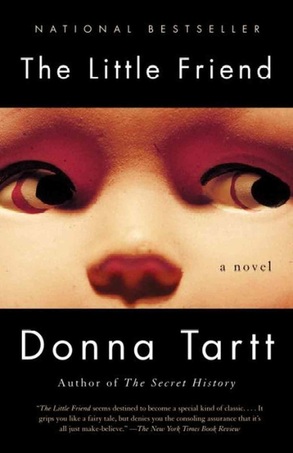 Written by Lauryn Smith You probably know by now that Donna Tartt is one of my favorite authors. “The Secret History” and “The Goldfinch” are both easily on my list of top 10 favorite books. Now I am here to discuss “The Little Friend.” I will not be adding “The Little Friend” to my top 10 list, but it is still worth reading… and then reading again. In this work of fiction, Tartt takes us to the American South. In Alexandria, Mississippi, a young, headstrong girl named Harriet is determined to find justice for the unsolved murder of her older brother Robin, who on Mother’s Day 12 years earlier was found dead, hanging from a tree in his own front yard. Ever since that fateful day, Harriet’s family, particularly her mother Charlotte, has been despondent, and memories of Robin cast woeful shadows whenever they arise. Trouble ensues as Harriet and her faithful companion Hely home in on Danny, a member of the ne'er-do-well Ratliff family, whom they suspect of the crime. Tartt uses these circumstances to illustrate the dichotomies of good and evil, innocence and guilt. Doing so through the lens of a child is a genius decision, as it also makes possible the detailing a person’s coming of age, which adds depth to Tartt’s efforts. The latter theme is tried and true, but Tartt imagines a wholly unique version of the tale, giving readers a flawed though entirely lovable and unexpected protagonist. Tartt has never let me down when it comes to characterization, and this book is no exception. Harriet, described by Tartt as looking like a “small badger” and having an “old soul,” is perhaps the best aspect of “The Little Friend.” Despite being a child, Harriet is complex, headstrong and intelligent. A lover of books, she uses what she reads to think through and guide her actions. Her bravery, for instance, stems from her reading tales of adventure, such as that of explorer Captain Scott. Her captivating personality, as well as those of the book’s other characters, makes the interrelationship between childhood and adulthood Tartt describes all the more impactful.
In fact, the incidents Harriet encounters make for a truly titillating story. The events somehow appear familiar. I have read many books, and the events in this one rival the most realistic of those of any other. The familiarity Tartt conjures must be due to the universality of the concept of growing up rather than the actual events of the story, which is full of danger and snakes and childhood antics. I have seen lukewarm reviews of this book, many of which are by those who anticipated “The Little Friend” to be a murder mystery. Based on the book’s description, I can understand the confusion. However, the book is undeserving of poor reviews. It is extremely well crafted. Though it includes thematic elements, it is not meant to be a thriller. Its purpose is much deeper than that. The most dramatic incident, which is depicted in the book’s opening chapter, merely provides the backdrop for subsequent events. That said, I do wish there was some resolution of Robin’s murder, or at least some provision of explanatory details. This speaks more to my curiosity than a flaw in the storyline, though. I have also seen that many consider the book boring and the plotline lacking. Of course, I disagree. The plot is smooth, seamlessly coasting from one point to the next. I also think there is more action that the book is given credit for. Drug dealings? Check. Payback and revenge? Check. Quirky old ladies? Check. Somehow Tartt melds all types of disparate, sometimes ugly occurrences, enchantingly portraying them through the rose-colored glasses of children. She is judicious in her portrayal of the world as some know it. Since it is so characteristic of her prose in general and not just her prose in “The Little Friend,” I will not waste too much time fawning over how good Tartt’s writing is in all senses of the craft. Her voice rings true throughout. What I will fawn over is how Tartt reconnects readers with the whimsicalness of youth. She balances all things dark and ponderous with things light and endearing, and she never compromises quality. It may not be on par with “The Secret History” or “The Goldfinch,” but “The Little Friend” is still a worthy read, and I am confident that it will appeal to a large audience. To experience writing that exemplifies the rich and artistic establishment of mood and setting, try reading “The Little Friend.” The book is refreshing in every sense of the word. If you need a literary pick-me-up, Tartt is the woman to turn to. Title: The Little Friend Author: Donna Tartt Publisher: Vintage Publication date: October 28, 2003 Page count: 624 List price: 416.95 ISBN: 978-1400031696 Awards: 2003 WH Smith Literary Award Nominations: 2003 Orange Prize for Fiction Shortlist
0 Comments
Your comment will be posted after it is approved.
Leave a Reply. |

Enjoying my book reviews? If you’ve found them helpful or simply love diving into a good book, consider supporting my caffeine-fueled reading sessions! Your contribution helps keep the reviews coming and ensures I stay wide awake for those late-night reading marathons. Cheers to a shared love for literature! ☕️
Categories
All
|
